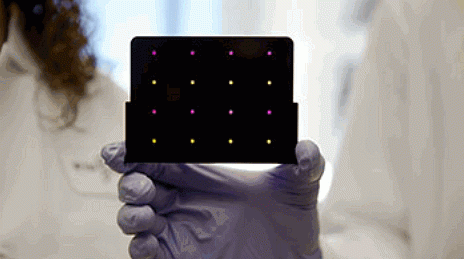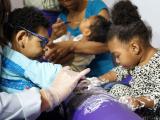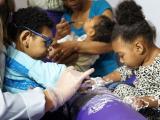In the race to develop new tools to detect Zika virus, an inexpensive and easily deployable paper-based test that can produce a result in a few hours on not just blood but also saliva and urine showed promise in a recent animal study.
The Zika test protoype came together in 6 weeks and involves synthetic gene-based sensors embedded on portable small discs of ordinary paper. Researchers, most of them from Harvard University and the Massachusetts Institute of Technology, published their findings in the May 6 early online edition of Cell.
In a February expert meeting to help establish priorities, the World Health Organization said diagnostic tests were at the top of the list.
Test offers outbreak-response advantages
Researchers had already developed a mock-up of the color-changing test to screen for Ebola, which relies on a new biomolecular sensor designed to screen for specific RNA sequences. In the Cell study, they used blood samples from Zika-infected monkeys and virus from cells experimentally infected in the lab to overcome a key hurdle: being able to detect the virus in the low concentrations normally found in blood and other body fluids.
The test produced a result in as little as 1 hour in field settings without specialized equipment and highly trained lab technicians. The researchers say it could help public health officials track the spread of the outbreak in real time, useful for putting together containment strategies and treatment plans.
Keith Pardee, PhD, an assistant pharmacy professor at the University of Toronto and former postdoctoral fellow at the Wyss Institute for Biologically Inspired Engineering at Harvard University, said in a Wyss Institute press release that the vivid images coming out of the Zika crisis are heartbreaking. "We hope a tool like this can help reduce the impact of the outbreak until a vaccine can be developed."
The test's three steps consist of amplifying the body fluid sample, detecting Zika virus with discs that change color for a positive result, and using the CRISPR-Cas9 gene-editing tool to define the Zika strain, producing yet another color change.
So far the system can distinguish Zika from dengue, another member of the flavivirus family.
Alexander Green, PhD, assistant professor at Arizona State University, formerly a Wyss Institute postdoc, said in the press release that the third step boosts the accuracy of the test. "As we prepare this technology for translation, we plan to validate our system against dozens or even hundreds of clinical samples."
Research also envision being able to quickly tailor the system—perhaps within 1 week—for other emerging outbreaks, and they are working on private and public funding to commercialize the diagnostic system and make it available to health responders, according to the Wyss Institute.
Other developments
- The US Centers for Disease Control and Prevention today added Saint Barthelemy, a French territory in the Caribbean, to its level 2 travel advisory for pregnant women and those considering getting pregnant.
- Grenada has reported its first locally acquired Zika virus case, the European Centre for Disease Prevention and Control said in its weekly communicable disease update, citing the Caribbean Public Health Agency.
- South Korea has reported a travel-related Zika infection in a 25-year-old woman who spent almost a month working in Vietnam, returning from Ho Chi Minh City on May 1, Xinhua, China's state news agency, reported today, citing local media. Vietnam recently reported locally acquired cases, and South Korea has now detected four travel-linked Zika cases.
See also:
May 6 Cell study
May 6 Wyss institute press release
May 6 University of Toronto press release




















